Artificial intelligence (AI) has revolutionized numerous industries, and writing is no exception. From drafting complex reports to generating creative narratives, AI tools are redefining the boundaries of human expression. The rise of AI in writing has provided individuals and organizations with powerful solutions to streamline their processes, enhance creativity, and reduce time-to-market for written content. But with a plethora of options available, how do you determine the best AI tool for your writing needs?
Core Features to Look for in an AI Writing Tool
Natural Language Processing (NLP) Capabilities
The backbone of any AI writing tool lies in its Natural Language Processing capabilities. High-quality NLP ensures that the generated text mimics human language with precision, capturing nuances such as idiomatic expressions, cultural references, and linguistic subtleties.
Tone and Style Adaptability
An effective AI tool can adapt to different tones and styles, whether crafting a formal business proposal or a casual blog post. This adaptability ensures that the content resonates with the intended audience.
Multi-Language Support
For global users, multi-language support is indispensable. The ability to generate or edit content in multiple languages expands the utility of an AI tool, catering to diverse linguistic markets.
Content Generation vs. Content Enhancement
While some tools excel in generating content from scratch, others focus on enhancing existing text. A robust tool should ideally balance both capabilities, providing users with flexibility.
Integration with Other Platforms
Integration with platforms like Microsoft Word, Google Docs, or content management systems enhances the usability of AI writing tools. Seamless integration ensures that users can incorporate AI assistance into their existing workflows effortlessly.
User-Friendliness and Interface Design
A clean, intuitive interface minimizes the learning curve and maximizes productivity. The best tools prioritize user experience, ensuring that even non-technical users can leverage their capabilities effectively.
Types of AI Writing Tools
AI Tools for Creative Writing
For novelists and screenwriters, AI tools offer a treasure trove of inspiration. These tools assist in plotting, character development, and even dialogue generation.
AI Tools for Technical Writing
Technical writers benefit from AI tools that simplify jargon-heavy text, ensuring clarity and precision without losing depth.
AI Tools for Business and Marketing Copy
From email campaigns to social media posts, business-oriented AI tools help create persuasive and engaging copy tailored to target audiences.
Tools Specializing in Academic Writing
Academic tools focus on structuring research papers, citing sources accurately, and ensuring adherence to specific style guides such as APA or MLA.
Detailed Comparison of Best AI Writing Tools
1. Jasper
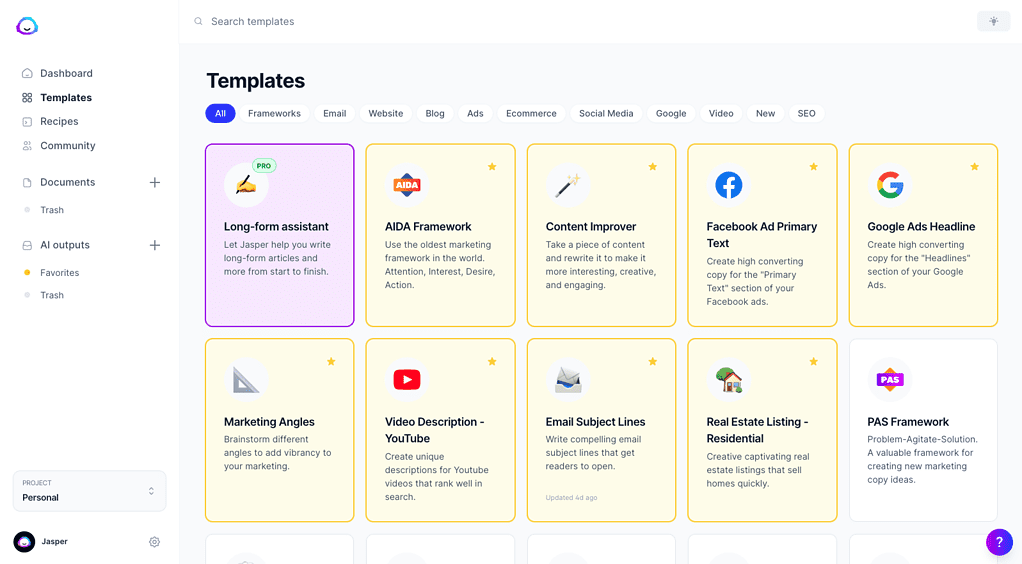
- Description: Jasper is a versatile and user-friendly AI writing tool that supports various content types, from marketing copy to social media posts and creative writing.
- Advantages: Broad functionality, intuitive interface, and strong community support.
- Disadvantages: Premium pricing may deter budget-conscious users.
2. Writesonic

- Description: Known for its long-form content capabilities, Writesonic includes built-in SEO tools to optimize articles and blog posts.
- Advantages: Excellent for SEO-focused content and detailed articles.
- Disadvantages: Limited customization for tone and style preferences.
3. Copy.ai
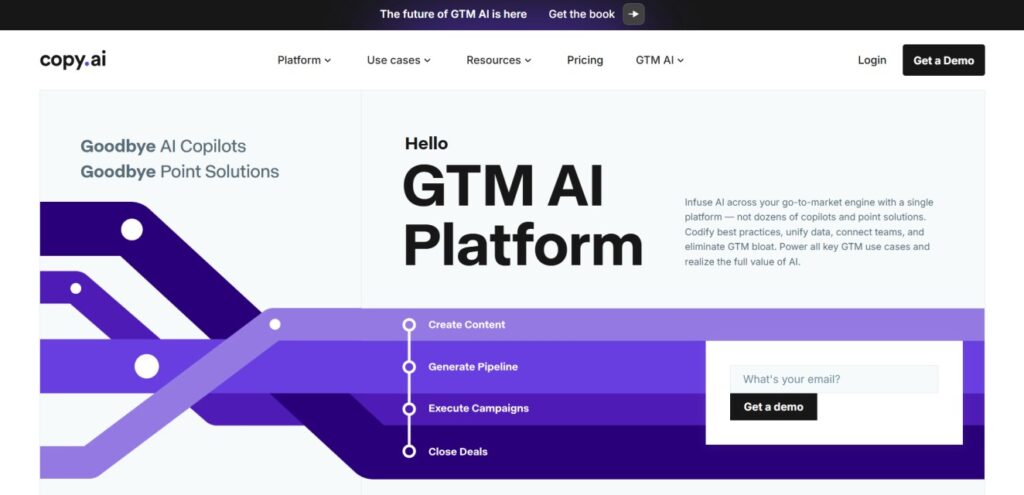
- Description: Focused on marketing, Copy.ai excels in crafting catchy ads, website copy, and email subjects.
- Advantages: Simple to use and perfect for short-form marketing content.
- Disadvantages: Falls short in technical or in-depth content creation.
4. SurferSEO

- Description: Primarily an SEO optimization tool, SurferSEO integrates AI writing features to create search engine-optimized content.
- Advantages: Exceptional for SEO-driven projects.
- Disadvantages: Limited capabilities beyond SEO tasks.
5. Grammarly
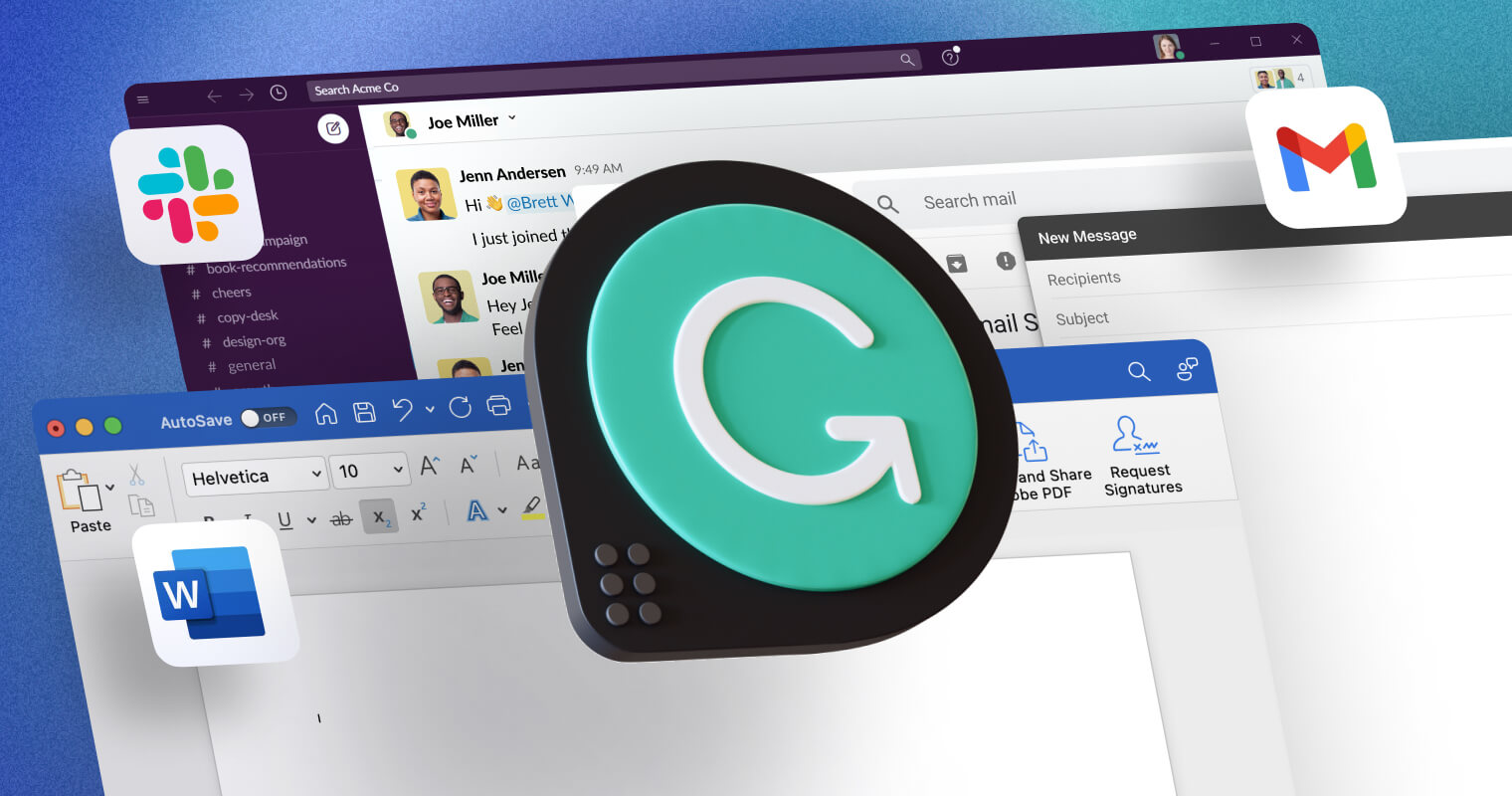
- Description: More than a grammar checker, Grammarly\u2019s premium version offers AI-driven tone and style adjustments.
- Advantages: Improves clarity, correctness, and engagement in writing.
- Disadvantages: Lacks robust content generation features.
6. QuillBot
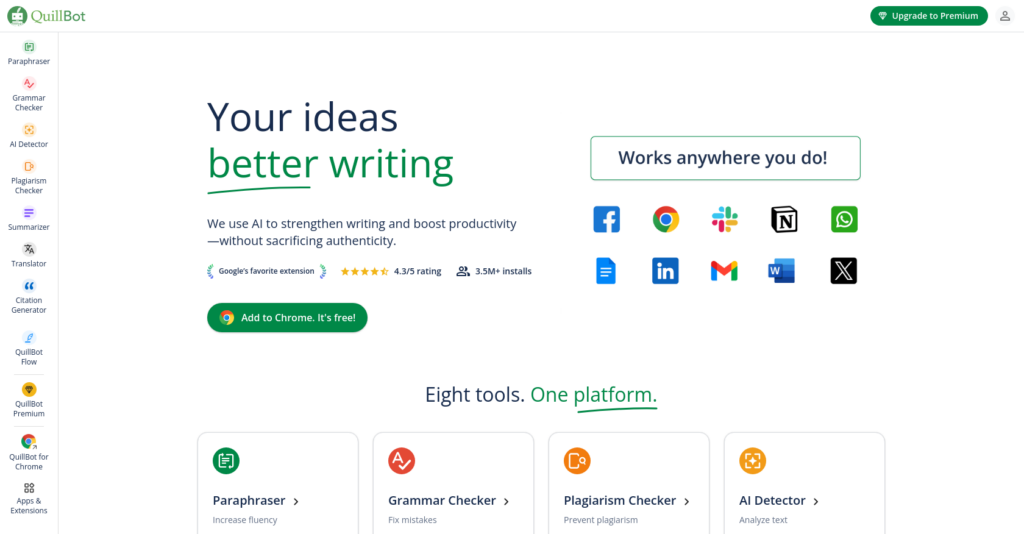
- Description: A paraphrasing and summarizing tool ideal for improving sentence clarity and flow.
- Advantages: Affordable and highly efficient for paraphrasing tasks.
- Disadvantages: Limited utility outside of rephrasing and summarization.
7. Rytr
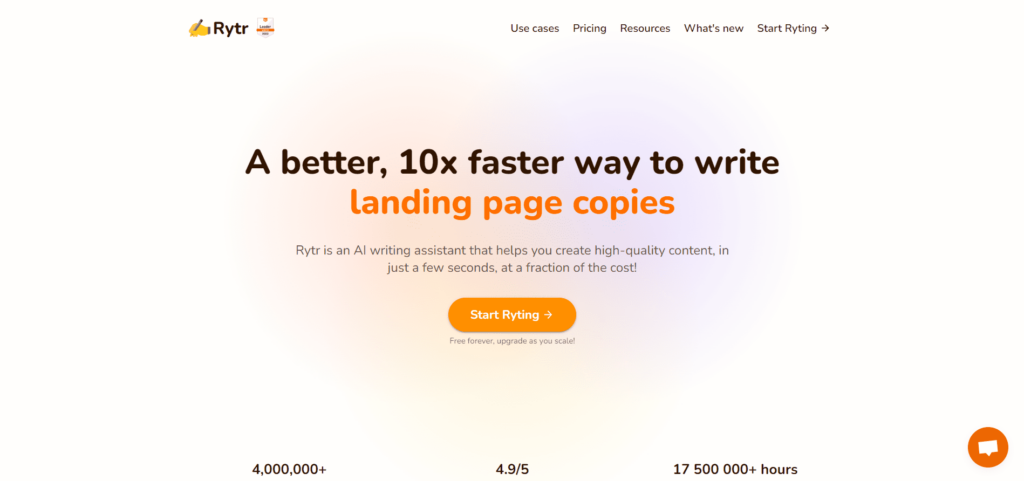
- Description: A budget-friendly, versatile AI writing tool that supports a range of content types.
- Advantages: Offers a free plan and diverse options for content creation.
- Disadvantages: Advanced features lag behind competitors.
8. Anyword
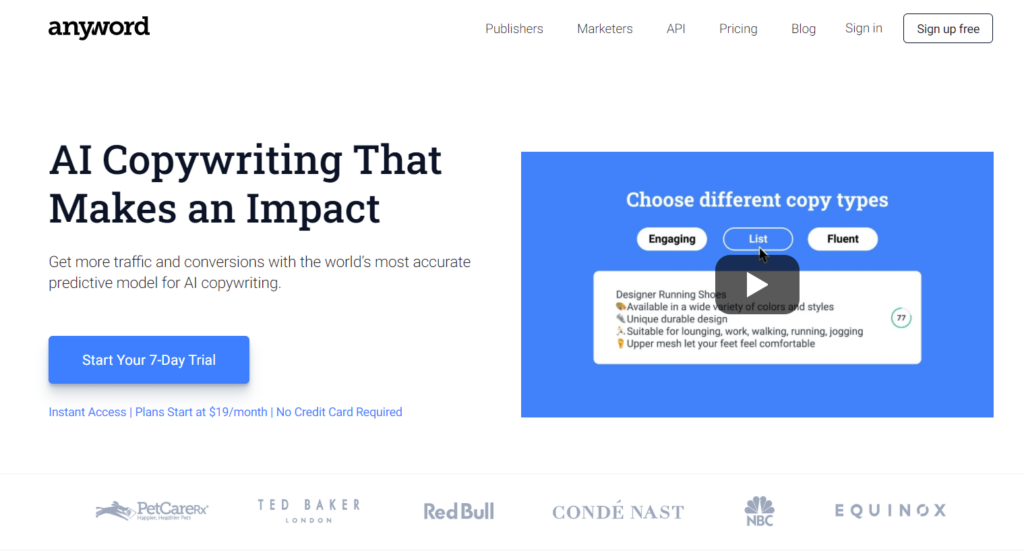
- Description: Designed for creating high-performing social media posts and ads, Anyword uses AI to predict content performance.
- Advantages: Data-driven and ideal for marketers.
- Disadvantages: Focuses narrowly on ad and social media content.
9. Frase
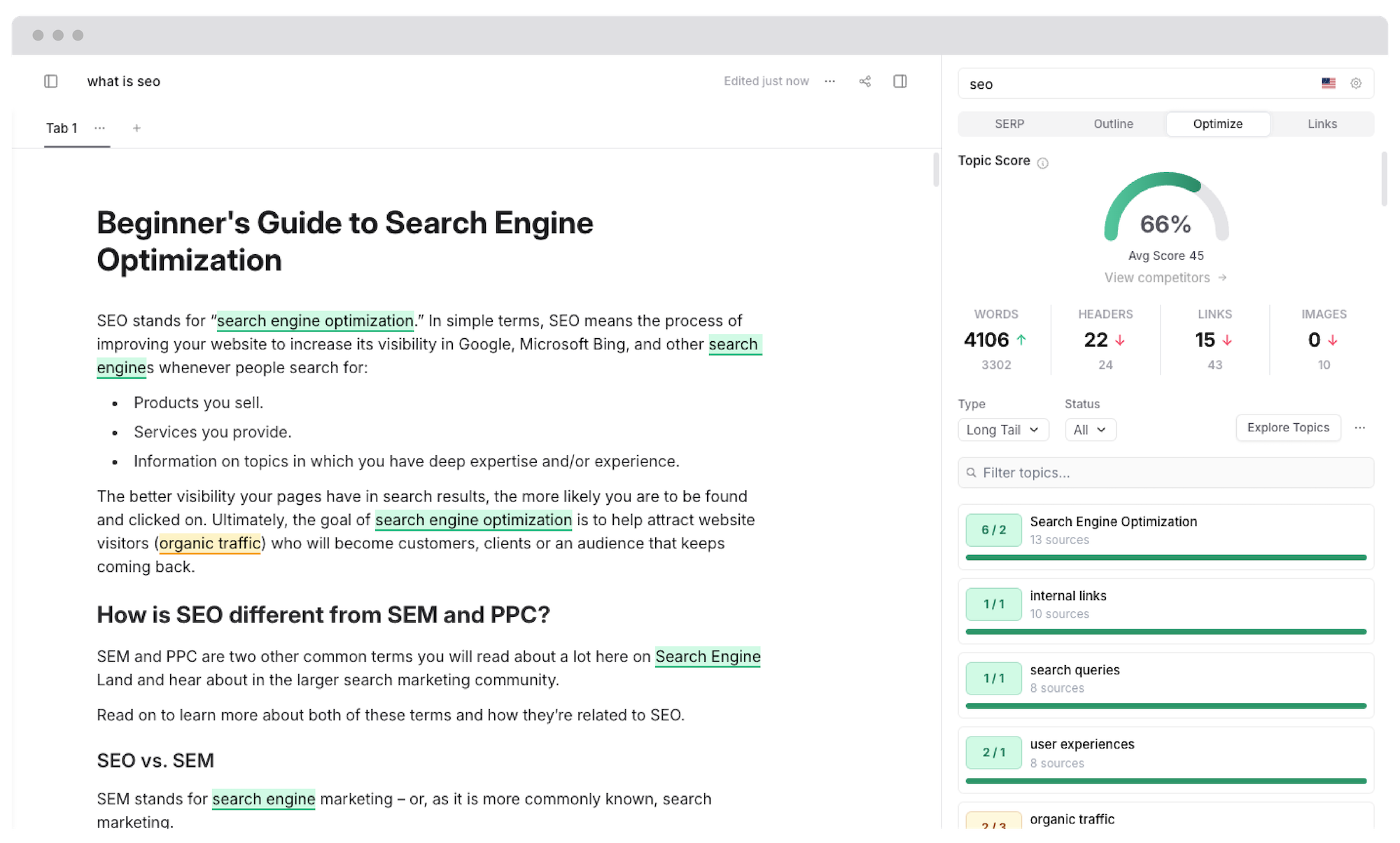
- Description: Integrates SEO tools with AI writing to create content optimized for search rankings.
- Advantages: Comprehensive SEO features for content creation.
- Disadvantages: Can be challenging for beginners.
10. AI Writer
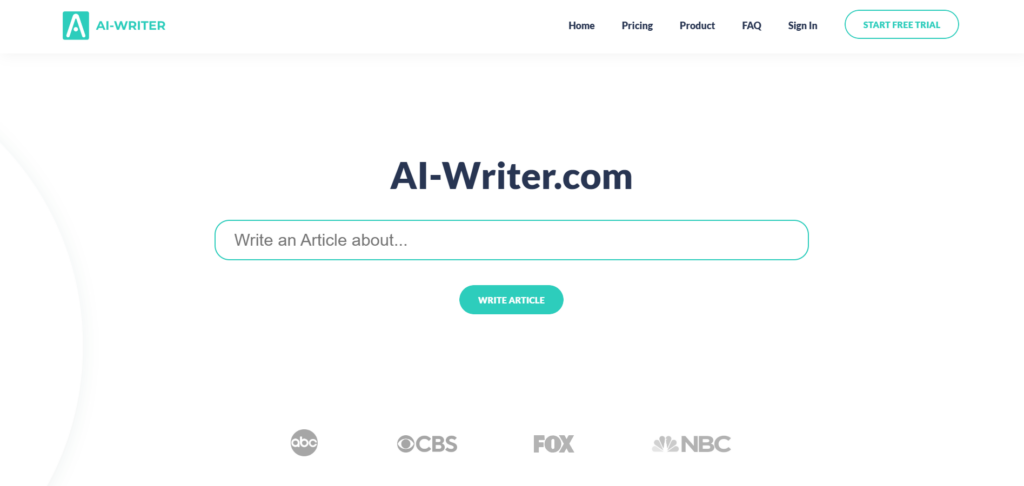
- Description: Aimed at long-form content, AI Writer creates high-quality articles and blog posts.
- Advantages: Produces content that mimics human writing effectively.
- Disadvantages: Limited flexibility for other content types.
11. Sudowrite

- Description: A tool tailored for fiction writers, offering features for character creation and plot development.
- Advantages: Unique focus on creative and narrative writing.
- Disadvantages: Not suited for non-fiction or business content.
12. GrowthBar
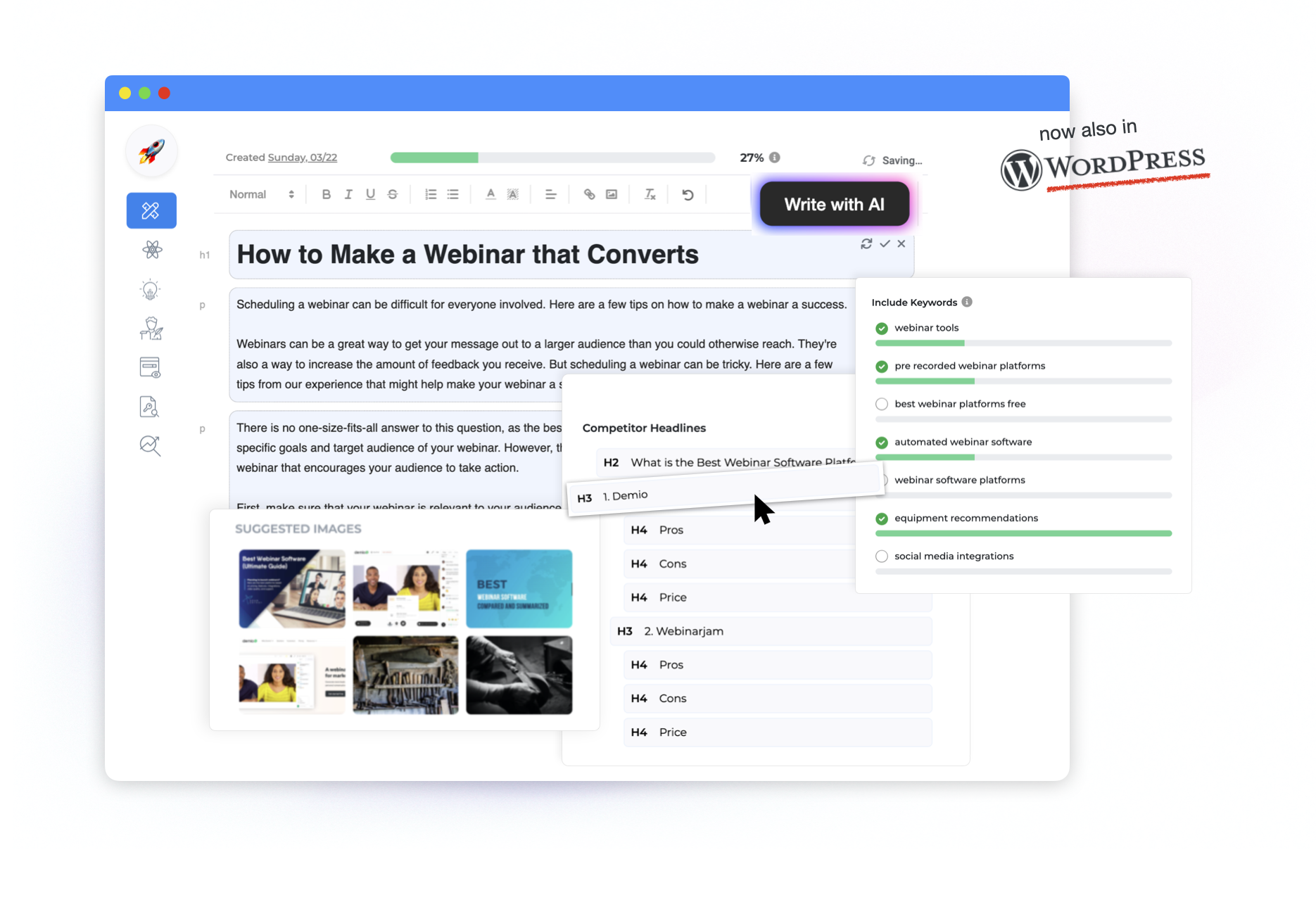
- Description: Combines marketing and SEO capabilities to identify content gaps and generate high-ranking content.
- Advantages: SEO-centric and user-friendly.
- Disadvantages: Narrow focus on SEO use cases.
13. PepperType.ai

- Description: Focuses on creating marketing and sales copy, including website content and ad campaigns.
- Advantages: Designed for conversion-driven writing.
- Disadvantages: Limited creativity and long-form capabilities.
14. Article Forge
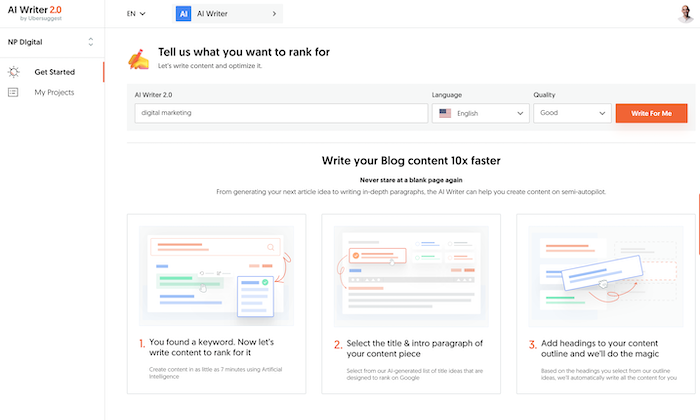
- Description: Specializes in generating long-form, in-depth articles on various topics.
- Advantages: Ideal for creating detailed, informative articles.
- Disadvantages: May require additional editing for tone consistency.
15. Longshot AI
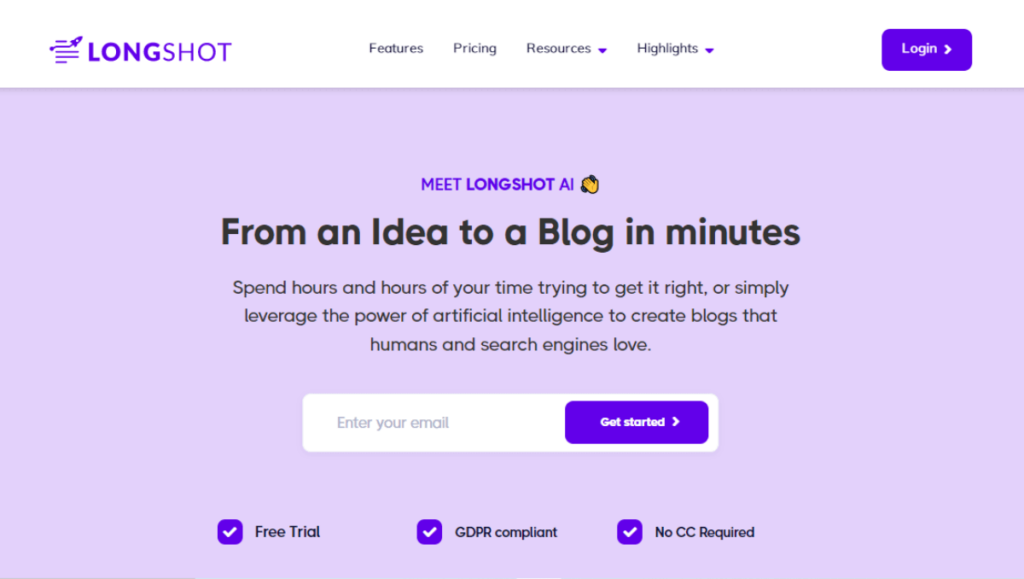
- Description: Optimized for crafting high-converting landing and sales pages.
- Advantages: Tailored for marketers and sales professionals.
- Disadvantages: Limited beyond landing page content.
Benefits of Using AI Writing Tools
Enhanced Productivity
AI tools significantly reduce the time required to create high-quality content, enabling users to focus on strategic tasks.
Cost-Effectiveness for Businesses
For businesses, AI tools minimize the need for extensive human resources, providing an economical alternative without compromising quality.
Bridging the Gap Between Amateur and Professional Writing
AI tools empower amateur writers by providing expert-level assistance, helping them produce polished and impactful content.
Limitations and Ethical Considerations
Risk of Over-Reliance
Excessive dependence on AI can stifle creativity and critical thinking, reducing the originality of written work.
Issues of Originality and Plagiarism
AI-generated content raises questions about intellectual property and the originality of ideas, necessitating ethical guidelines.
Balancing AI Use with Human Creativity
Striking a balance between AI assistance and human ingenuity ensures that content remains authentic and engaging.
Practical Tips for Choosing the Right Tool
Assessing Personal or Organizational Needs
Understand your requirements—be it creative writing, technical documentation, or marketing copy—before selecting a tool.
Considering Budget Constraints
While some tools offer free versions, premium features often come at a cost. Evaluate the value each tool provides relative to its price.
Testing and Trial Periods
Leverage free trials to assess a tool’s capabilities before committing to a subscription.
Future of AI in Writing
Emerging Trends in AI Writing Technology
AI tools are rapidly evolving, with advancements in generative pre-trained models and adaptive learning promising even more sophisticated outputs.
Potential Implications for Human Writers
As AI continues to advance, writers must adapt, finding new ways to complement AI capabilities with human creativity.
AI writing tools are reshaping the landscape of written communication, offering unparalleled efficiency and creativity. By understanding their features, benefits, and limitations, users can make informed choices that align with their goals.


